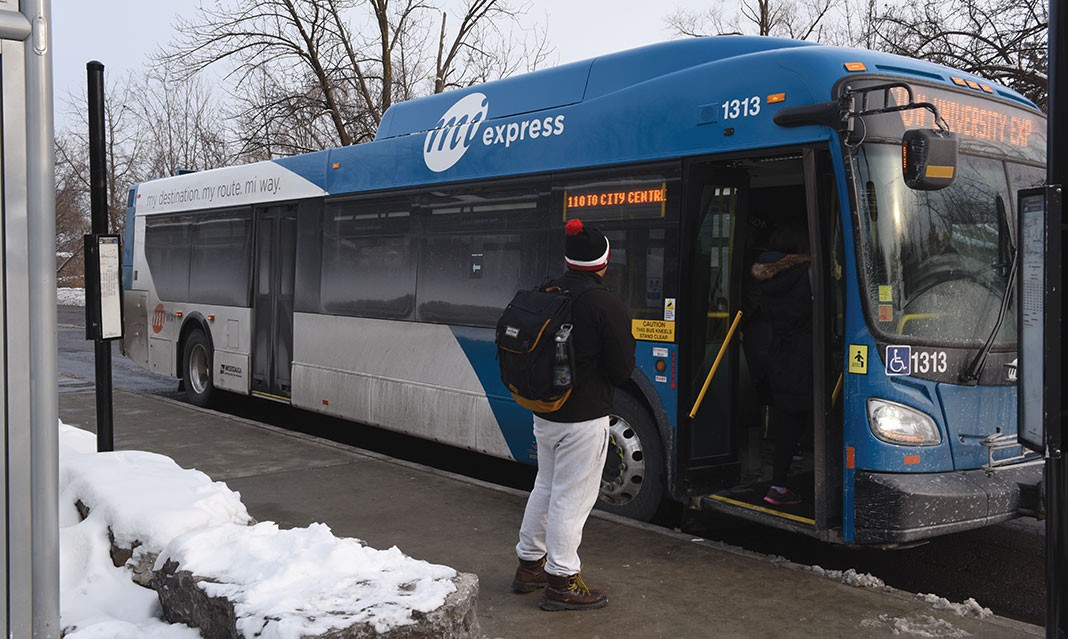The current challenges students face in terms of transportation and the commuting service across the Greater Toronto and Hamilton Area is not a new or unique issue.
StudentMoveTO is a research organization that aims to address existing transportation issues in the GTHA, in collaboration with faculty members and students from the U of T campuses, York University, Ryerson University, and OCAD.
Earlier in September, StudentMoveTO organized a symposium at Toronto City Hall with a special invitation to students to voice their concerns on commuting to and from campus.
Matti Siemiatycki, an associate professor for U of T St. George’s Department of Geography and Program in Planning and member of the StudentMoveTO organization, mentioned that one of the most frequent complaints students raised at the symposium was that students “are not nine to fivers”. Students are travelling distances across the region to get to and from campus at times that do not correspond with typical commuter times. The timings also interfere with students’ abilities to actively participate in on-campus activities or balance their social and work lives.
“The transportation system is not very well set in terms of schedule and fair integration […] [Students] are travelling late into the evening and so the service is not as good or non-existent and that’s another challenge,” said Siemiatycki, adding that another complaint was cost. “Students are living on a tight budget during the student years and cost is another issue that we heard consistently.”
According to Siemiatycki, the presidents of U of T, York, Ryerson, and OCAD had been discussing key issues regarding the city of Toronto, and identified transit as a “a key topic where the universities would like to collectively engage with the student body and the city at large”. A committee was formed to head this initiative, which later became known as StudentMoveTO.
StudentMoveTO is interested in collecting data on the travelling patterns of all transportation modes, including the transit system, driving, walking, and even biking.
The organization is taking the initiative to capture the needs and concerns of the student body that are absent in existing travel models. Together, the student population across the four universities involved is approximately 185,000. The survey is important for the organization because student voices are minimally integrated in existing data.
Siemiatycki claims that the reason behind this is, “Typically when we look at data that is collected on transportation across the region, it doesn’t really capture people within that [student] age demographic all that well, in part because the surveys are typically landline surveys […] Many students these days do not have a landline, so it’s hard to get in touch with them.”
StudentMoveTO began emailing a travel survey in batches to all members of the U of T student population from September 28 and will continue until December 8. The results are expected to provide a data foundation that can be made public and will be used by agencies such as the TTC or Metrolinx.
Siemiatycki also mentioned the importance of the student body throughout the whole process. Students are expected to use the survey results in their courses or advocacy groups and make policy recommendations regarding the unique challenges they face in transportation, irrespective of the mode of transportation they take.
“We have been working with the Canadian Federation of Students and they have been very actively involved and very supportive […]. So there has been a strong student voice in this as well and we are hoping that once the survey is done, [students] will use the data as well to learn what is happening in their campus and develop their own policy ideas,” said Siemiatycki
According to Siemiatycki, the data is important because student concerns across the different universities vary.
“Students at Ryerson may have very different issues than at UTSC or UTM or York, and we are very aware of that, and part of the reason for collecting data on all of them at once is so that we have a common research instrument that allows you to see these differences between the campuses and then in a very nuanced way, learn what the issues are and how they differ,” he said. The survey results will allow the team to suggest amendments to policies or provide data to interested parties.
He encourages students across all campuses, including UTM, to take the survey. “What policy makers and what students can use the data for are really dependent on the response rate,” he says.
The process for completing the survey is simple. Students can either wait for an email from the StudentMoveTO team between September and December or log in to the website using their student ID and complete the survey. For UTM students, a UTORid is required to login. The survey asks students to record information on one day of their travelling routine. This will allow the StudentMoveTO team to picture what the different modes and timings of travel are for students.
StudentMoveTO’s goal is to provide a starting point for discussion on the transportation issue across the region with supporting evidence for future policy implications.




For any UofT students wanting to answer the survey, head to:
https://uoft.studentmoveto.ca/
For the other universities, the links are as follows:
https://ocadu.studentmoveto.ca/
https://ryerson.studentmoveto.ca/
https://yorku.studentmoveto.ca/
Thanks and follow the project’s progress on Facebook if you want to contribute!
http://www.facebook.com/studentmoveto